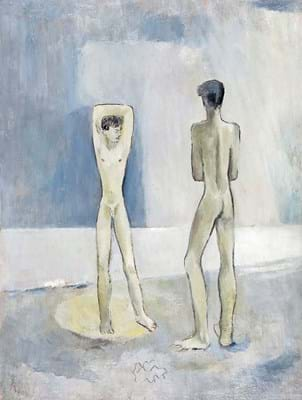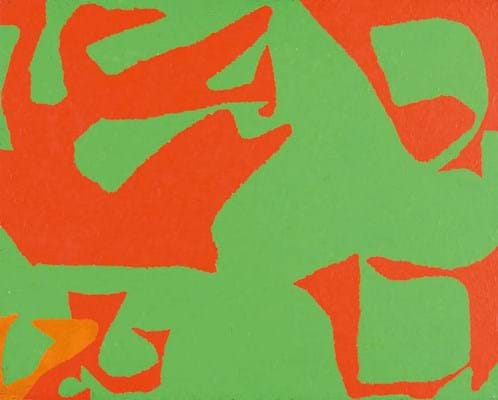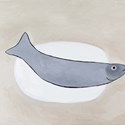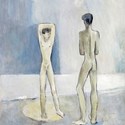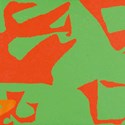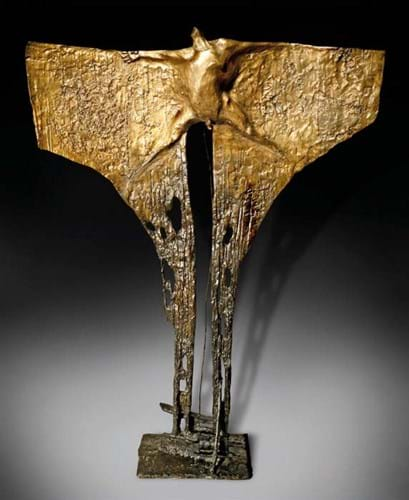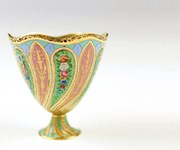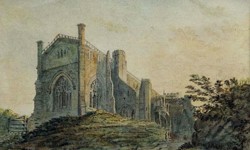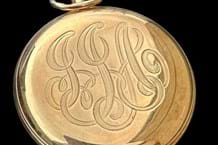At Salisbury auction house Woolley & Wallis (25% buyer’s premium), a buoyant single-owner sale of Modern British art offered in its entirety showed that this approach does not necessarily guarantee higher sums or a better selling rate, however.
The works offered in the 190-lot auction came from the estate of the late Geoffrey Harley, a Wiltshire antiques dealer with a passion for Mod Brit, although he never dealt in it.
Victor Fauvelle, head of the picture department at Woolley & Wallis, told ATG that offering the complete collection, which varied in estimates from £200 to over £70,000, generated a busier saleroom and stronger bidding.
“By presenting them with better things, the value of the more affordable works goes up. People are seeing the collection in context,” he said.
On February 7, a mix of private and trade buyers absorbed nearly 95% of the lots, spending £626,000 in the process, comfortably over the sale estimate of £395,000-576,000, with an average lot value of £3500.
Harley had started buying in the 1970s and ’80s from London galleries such as Beaux Arts and dealers like Manya Igel, whose own collection of Mod Brit pictures is due to go under the hammer at Bonhams in March.
“I think he was one of these very impulsive buyers. If he went into a gallery and there was a new artist showing, he felt a responsibility to support them by buying something,” said Fauvelle.
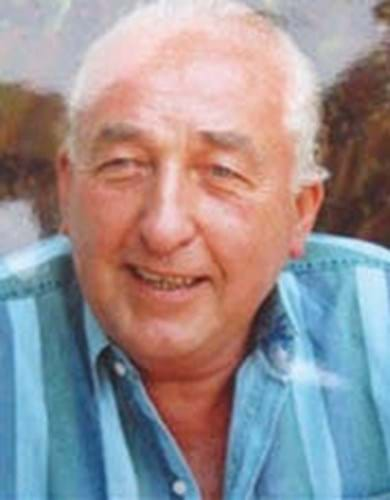
Geoffrey Harley.
Great Scott
The star turn was a late fish painting by William Scott (1913-89), acquired from Beaux Arts three years after it was created.
The 2ft 1in x 2ft 6in (63 x 76cm) still-life depicting a grey fish on a white plate was painted in 1983, after a visit to Osaka in Japan revived Scott’s appreciation for simple forms.
Estimated at £50,000-70,000, it was knocked down to New Bond Street gallery Richard Green for the sale-topping price of £102,000.
While his still-lifes from the 1950s are the most sought-after – a double-sided still-life made a record £920,000 at Christie’s in June 2008 – the sum fetched was among the strongest for a picture from his late period. The closest comparable work, another slightly smaller fish painting from 1982, sold for £50,000 at Bonhams London in May 2012.
It shows demand for Scott has grown over the intervening years with several big prices recently recorded in both London and regional auctions, although the artist is still to break the £1m barrier.
Heron abstract
Among the admirers of Scott’s work was the St Ives School painter Patrick Heron (1920-99), another sought-after mid-century artist. He was represented in the sale by a stark red and green 16 x 20in (41 x 51cm) oil on canvas that belonged to a later, pared-down group of abstract canvases produced in the 1970s.
Another Beaux Arts purchase, it sold at more than double the £15,000-20,000 guide to a private buyer for £55,000 – a punchy sum for a work of this period and diminutive size.
Meanwhile, the presence of figures in the paintings of Sussex-born painter Keith Vaughan (1912-77) command a premium on the secondary market.
The auction house has had considerable success in the Vaughan market recently. Last June, a work dating to 1948 titled Sunbathers, from the collection of the late London solicitor Keith Allison, overshot a £30,000-50,000 estimate to sell for £120,000.
The sole Vaughan entry in the Harley collection was another figurative canvas, painted over a decade earlier, depicting two male nudes against a plain bluish grey background. The 22 x 16in (56 x 41cm) work had previously sold at Christie’s London in 1988 for £1800. In Salisbury, it sold to a trade buyer just below the upper guide at £29,000.
Henry Scott Tuke (1858-1929) is another artist famous for his male nudes, usually painted by the sea. One of these typical canvases, dating to 1911, was secured for double the estimate at £24,000.
A 12 x 10in (30 x 25cm) crucifixion scene by Craigie Aitchison (1926-2009) continued the strong upward trend for the Scottish painter, doubling its lower guide to sell for £17,000.
Sculpture section
The nine-lot sculpture section in the Geoffrey Harley sale added £86,900 to the bottom line.
Michael Ayrton’s (1921-75) patinated bronze of a melting Icarus (pictured above) led the field, selling for nearly twice the top estimate at £38,000.
While he excelled in more than one medium, Ayrton’s sculptures tend to draw the most competition at auction. The 3ft 4in (1.02m) high piece, titled Icarus Rising III, was made in the 1960s in an edition of nine.
The classical myth of Daedalus and his son Icarus, who flew too close to the sun wearing the wax wings his father had made for him, dominated the artist’s oeuvre for much of his career.
For inspiration, the sculptor studied photographs of astronauts subjected to gravitational forces that distorted the flesh of their faces.
The price is among the highest at auction for a bronze of this size, exceeding several other Icarus bronzes, including a smaller variation (also from an edition of nine) that sold at Sotheby’s Bowie/Collector sale in November 2016 for a premium-inclusive £30,000.
Chadwick success
Elsewhere, a sure-fire seller was one of Lynn Chadwick’s (1914-2003) popular standing cloaked figures. From an edition of eight, it comes from a series that Chadwick produced from 1976 of figures, often in couples, clad in voluminous cloaks.
This single example made £29,000 against a £12,000-18,000 estimate.
Sculptures by Edouardo Paolozzi (1924-2005), Ralph Brown (1928-2013) and Paul Mount (1922-2009) also got away in or above guides.



